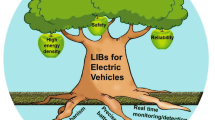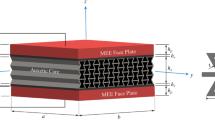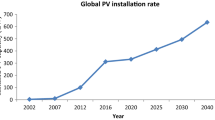Abstract
In this study, microcellular polypropylene (PP) electrets were fabricated under various charge and process conditions. This was followed by thermally stimulated current (TSC) experiments to examine in a qualitative manner the charge stability of the electrets and the origin of the surface and space charges. In addition, a series of experiments was performed to obtain the effective piezoelectric constant in the thickness direction using an equation that considers external inertial loading effects. An optimization process using the Taguchi method was conducted to find the optimal conditions for the charging process and the electret properties that maximize the piezoelectric effects. To compare the contributions of signal parameters, a pooled analysis of variance (pooled ANOVA) was used. From these results, the factors that most significantly influence the piezoelectric effects were identified. A response surface was constructed to predict the optimal values of these factors to obtain the best piezoelectric effects. As a consequence, the applied voltage and the modified film thickness were turned out to be the most influential factors, and it was predicted that the optimal conditions are a 30-kV corona discharge and use of 60-µm-thick film.
Similar content being viewed by others
Abbreviations
- x i :
-
coordinate axis in the i th direction; i th input variable
- ϕ :
-
electric potential
- d33*:
-
effective piezoelectric constant of film in x 3 direction
- Q :
-
total amount of charge
- h :
-
film thickness
- u 3 (h) :
-
displacement of the film’s top surface in x 3 direction
- A :
-
surface area of film
- m :
-
mass of loading mass
- g :
-
gravitational acceleration constant
- τ3 (h) :
-
applied stress at the film’s top surface in x 3 direction
- s 33 E* :
-
effective compliance of film in x 3 direction
- s ij E :
-
tensor components of compliance
- βi(j)(i, j=1,...,k):
-
regression coefficients
- y ij :
-
ith response at the jth trial
- n i :
-
replications for the i th response
- ξ i :
-
ith independent variable
- ξ 0i :
-
averages of the measured values of ξ i
- c i :
-
constants to normalize ξ i
- y :
-
output variable
- ŷ :
-
estimated output function
- S/N ratio i :
-
signal to noise ratio of the i th response
References
Kim, Y., Kim, P. and Seok, J., “Piezoelectricity of a microcellular polypropylene electret under an external inertial load,” Jpn. J. Appl. Phys., Vol. 48, No. 3, pp. 031402, 2009.
Hong, C.-U., Kim, J.-M., Kim, M.-H., Kim, S.-J., Kang, H.-S., Kim, J.-S. and Kim, G.-B., “Gas transfer and hemolysis in an intravascular lung assist device using a PZT actuator,” IJPEM, Vol. 10, No. 1, pp. 67–73, 2009.
Zhang, X., Hillenbrand, J. and Sessler, G. M., “Piezoelectric d33 coefficients of cellular polypropylene subjected to expansion by pressure treatment,” Appl. Phys. Lett., Vol. 85, No. 7, pp. 1226–1228, 2004.
Zhang, X., Sessler, G. M. and Hillenbrand, J., “Improvement of piezoelectric coefficients of cellular polypropylene films by repeated expansions,” J. Electrostat., Vol. 65, No. 2, pp. 94–100, 2007.
Wegener, M., Wirges, W. and Multhaupt, R. G., “Two-step inflation of cellular polypropylene films: void-thickness increase and enhanced electromechanical properties,” J. Phys. D: Appl. Phys., Vol. 37, No. 4, pp. 623–627, 2004.
Zhang, X., Hillenbrand, J. and Sessler, G. M., “Improvement of piezoelectric activity of cellular polymers using a double-expansion process,” J. Phys. D: Appl. Phys., Vol. 37, No. 15, pp. 2146–2150, 2004.
Zhang, X., Hillenbrand, J. and Sessler, G. M., “Thermally stable fluorocarbon ferroelectrets with high piezoelectric coefficients,” Appl. Phys. A: Mater. Sci. Proc., Vol. 84, No. 1–2, pp. 139–142, 2006.
Raizer, Y. P., “Gas discharge physics,” Springer, 1991.
Kim, P., Kim, Y. S., Lee, J. and Seok, J., “TSC (Thermally Stimulated Current) characteristic analysis for cellular polypropylene film electret,” Proceeding of KSPE Autumn Conference, pp. 249–250, 2008.
Mekishev, G. A., Yovcheva, T. A. and Viraneva, A. P., “Investigation of PP and PTFE film electrets stored at low pressure,” Non-Cryst. Solids, Vol. 353, No. 47–51, pp. 4453–4456, 2007.
Yovcheva, T. A., Avramova, I. A., Mekishev, G. A. and Marinova, T. S., “Corona-charged polypropylene electrets analyzed by XPS,” J. Electrostat., Vol. 65, No. 10–11, pp. 667–671, 2007.
Xia, Z., Ma, S., Qiu, X. and Zhang, Y., “Thermal stability of piezoelectricity for porous polytetrafluoroethlyene electrets film,” J. Electrostat., Vol. 58, No. 3–4, pp. 265–274, 2003.
Yovcheva, T., Mekishev, G. and Nedev, St., “Corona electrets obtained in different gas media,” J. Optoelectron. Adv. Mater., Vol. 7, No. 1, pp. 237–240, 2005.
Sahli, S., Bellel, A., Ziari, Z., Kahlouche, A. and Segui, Y., “Measure and analysis of potential decay in polypropylene films after negative corona charge deposition,” J. Electrostat., Vol. 57, No. 2, pp. 169–181, 2003.
Taguchi, G., Elsayed, E. A. and Hsiang, T., “Quality engineering in production systems,” McGraw-Hill, 1989.
Yovcheva, T. A., Mekishev, G. A. and Marinov, A. T. “A percolation theory analysis of surface potential decay related to corona charged polypropylene (PP) electrets,” J. Phys.: Condens. Matter., Vol. 16, No. 3, pp. 455–464, 2004.
Giacometti, J. A. and Carvalho Campos, J. S., “Constant current corona triode with grid voltage control. Application to polymer foil charging,” Rev. Sci. Instrum., Vol. 61, No. 3, pp. 1143–1150, 1990.
Kacprzyk, R., “Polarization of porous PE foil,” Proc. of 11th International Symposium on Electrets, pp. 207–210, 2002.
Kim, Y., “Characterization of a cellular polypropylene electret and its optimization,” MS thesis, School of Mechanical Engineering, Chung-Ang University, 2008.
Chen, Q., “Negative corona charge stability in plasma treated polytetrafluoroethylene teflon films,” J. Phys. D: Appl. Phys., Vol. 37, No. 5, pp. 715–720, 2004.
Gray, S., “A letter from Mr. Stephen Gray to Dr. Mortimer, Secr. R. S. Containing a farther account of his experiments concerning electricity,” Phil. Trans., Vol. 37, pp. 285–291, 1732.
Jain, V. and Mittal, A., “Charge storage studies of unstretched and stretched polypropylene film electrets using short circuit TSDC technique,” J. of Mater. Sci. Lett., Vol. 19, No. 22, pp. 1991–1994, 2000.
Pan, L. K., Wang, C. C., Hsiao, Y. C. and Ho, K. C., “Optimization of Nd: YAG laser welding onto magnesium alloy via Taguchi analysis,” Opt. Laser Technol., Vol. 37, No. 1, pp. 33–42, 2005.
Kumar, P. and Gaindhar, J. L., “Vacuum-sealed molding process: a review,” Proc. of 7th National Convention of Production Engineering Conference, pp. 35–40, 1998.
Chen, J. and Davidson, J. H., “Electron density and energy distributions in the positive DC Corona: Interpretation for corona-enhanced chemical reactions,” Plasma Chem. Plasma Process., Vol. 22, No. 2, pp. 199–224, 2002.
Chen, J. and Davidson, J. H., “Ozone production in the positive DC corona discharge: Model and comparison to experiments,” Plasma Chem. Plasma Process., Vol. 22, No. 4, pp. 495–522, 2002.
Chen, J. and Davidson, J. H., “Model of the negative DC corona plasma: Comparison to the positive DC corona plasma,” Plasma Chem. Plasma Process., Vol. 23, No. 1, pp. 83–102, 2003.
Lu, T. J., “Charging temperature effect for corona charged Teflon FEP electrets,” Proc. 7th Int. Symp. Electrets, pp. 287–292, 1991.
Gross, B., Giacometti, J. A. and Leal Ferreira, G. F., “Constant schubweg for hole transport in corona charged fluorethylenepropylene,” Appl. Phys. A, Vol. 37, No. 2, pp. 89–94, 1985.
Oliveira, O. N. Jr. and Leal Ferreira, G. F., “Electron transport in corona charged 12 µm teflon FEP with saturable deep traps,” Appl. Phys. A, Vol. 42, No. 3, pp. 213–217, 1987.
Multhaupt, R. G., “Less can be more: Holes in polymers lead to a new paradigm of piezoelectric materials for electret transducers,” IEEE Trans. Diel. Electr. Insul., Vol. 9, No. 5, pp. 850–859, 2002.
Myers, R. C., “Response surface methodology,” Allyn and Bacon Inc., 1971.
Sessler, G. M., “Electrets,” Springer Verlag, pp.118–142, 1980.
Turnhout, J., Staal, R. E., Wubbenhorst, M. and Haan, P. H., “Distribution and stability of charges in porous polypropylene films,” 10th International Symposium on Electrets, pp. 785–788, 1999.
Roy, R. K., “A primer on the Taguchi method,” Van Nostrand Reinhold, 1990.
Author information
Authors and Affiliations
Corresponding author
Rights and permissions
About this article
Cite this article
Kim, Y., Kim, P., Lee, J. et al. Characterization and parameter optimization of a microcellular polypropylene electret under an external inertial load. Int. J. Precis. Eng. Manuf. 10, 97–106 (2009). https://doi.org/10.1007/s12541-009-0100-6
Received:
Accepted:
Published:
Issue Date:
DOI: https://doi.org/10.1007/s12541-009-0100-6




